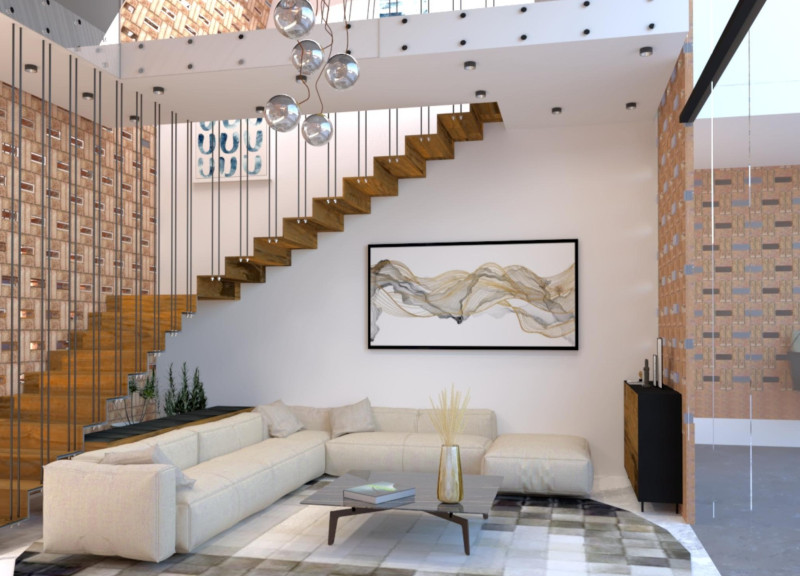5 key facts about this project
At its core, the project is designed to function as [insert primary use, e.g., a residential complex, community center, educational facility]. This intended use drives the layout and spatial organization throughout the structure, emphasizing connectivity and accessibility for all users. The open interiors are characterized by an intuitive layout that promotes ease of movement and interaction, fostering a sense of community within the space.
The architecture showcases a seamless flow between indoor and outdoor areas, reinforcing the importance of natural elements in contemporary design. Large glass windows and sliding doors allow an abundance of natural light to flood the interiors, creating bright, welcoming spaces that enhance the overall experience for the occupants. This design choice not only reduces dependency on artificial lighting but also connects users with their surroundings, encouraging an appreciation for the changing seasons and dynamic weather patterns.
A distinctive feature of the project is its commitment to sustainability. The architectural design incorporates a variety of environmentally friendly elements, such as green roofs, which serve to insulate the building while providing space for biodiversity. Rainwater harvesting systems are seamlessly integrated into the design, allowing for efficient water management that aligns with eco-conscious principles. Solar panels strategically placed on the roof augment the building’s energy efficiency, showcasing a comprehensive approach to sustainable design that minimizes its ecological footprint.
Materiality plays a vital role in the overall architectural vision. The choice of materials reflects both aesthetic preferences and functional requirements. Reinforced concrete is utilized for its structural capabilities, allowing for expansive and flexible interior spaces. Wood accents, particularly in the form of cladding and flooring, introduce warmth and texture, creating a tactile contrast that enhances the user experience. Glass not only serves functional needs by facilitating natural light but also visually blurs the boundaries between the exterior and interior spaces, fostering a sense of openness.
The architectural design also embraces local context through thoughtful landscaping. Native plants and outdoor spaces are incorporated to enrich the surrounding environment, making the project not only a building but also a contributor to local ecology. This holistic approach demonstrates a respect for the natural landscape and emphasizes the integration of architecture with its setting.
Unique design approaches are evident in the integration of smart technologies within the project. By employing automated systems for lighting, climate control, and security, the building responds dynamically to the needs of its occupants. These technological solutions enhance the overall functionality of the space, promoting comfort and efficiency without detracting from the architectural integrity.
Additionally, the project draws inspiration from [insert relevant cultural or historical references], incorporating elements that reflect the heritage of the location. This contextual awareness enriches the architectural narrative, connecting the building with its surroundings while inviting curiosity and engagement from visitors and inhabitants alike.
By considering the interplay between architecture, function, and sustainability, this project invites stakeholders to explore its nuances further. For those interested in delving deeper into the architectural aspects, including architectural plans, sections, and designs, a comprehensive presentation is available, offering rich insights into the innovative ideas that underpin this exemplary project.


 Marwa Zidi,
Marwa Zidi, 























